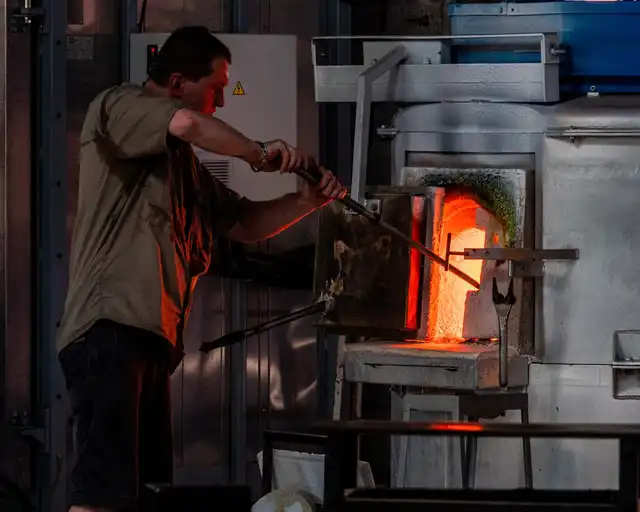What is a furnace blower?
A furnace motor is a mechanism that operates within a typical home HVAC system. The engine is designed to push hot air through vents. It comes online mainly while the heating system in the home is in use. These versatile fans can also blow cold air through the same ducts. Furnace fans have different motors. The two options are available are single-speed motors and variable-speed motors.
The difference is that single-speed blower motors blow air at one speed, meaning speed cannot be controlled. Variable-speed motors can be adjusted to blow air at different strengths. The blower is a key functionary of the air conditioning system. It works by blowing return air in the direction of the evaporator coil. This cooled air is pushed into the home through the vents. In a malfunction, central heating mechanisms and air conditioning systems stop working.

How it works
Thermostats operate based on your home heating and cooling systems to control the temperature safely. It can notice when the temperature drops below the thermostat’s benchmark. When this happens, a signal is sent to the furnace, telling it to produce warm air. The furnace responds by creating hot (or cold) air and pushing it out through the vents. This is when the blower motor engages your home system to keep the temperature as is required.
A blower motor will monitor and control the heated or cool air created. This process is achieved by using a fan to spin and blow a large volume of air at one time.
Single-speed motors have been designed to operate at one speed. They go at total energy capacity every time they are called into use. Single-speed motors commonly lead to cold spots because they are not adaptable. The temperature is well controlled when dealing with variable-speed engines. The thermostat primarily controls its binary, i.e., on/off. You will have a more evenly distributed temperature all around the living area.
What If It Stops Working?
You will face serious temperature problems if the blower motor stops working. This problem will require professional repair because of the complex mechanisms involved.
Your home will be cold: There will be a lack of warm air circulating through your home, and this will result in a severe drop in temperature. Your furnace will become uncontrolled as it won’t know the difference. If you plan to take this off and use it on your dust collector, then be prepared to see changes.
Risk of overheating the furnace: The limit switch will lose function and turn off the heat. This problem means that there is a chance the air inside the cabinet will become too hot. Compressed hot air can lead to an explosion making it dangerous.
Why Would It Stop Working?
A damaged or broken blower motor belt results in it not working. This part is often the first to get damaged regardless of the motor operating fine. Check that the belt that spins the fan is in good condition. If you notice any wear and tear, it may snap.
A screeching noise is a terrible sign. This sound can mean that the blower motor has dried up. Running it like this will damage the fan because it desperately needs lubrication.
Banging noises while using this fan can cause an explosion. It is commonly due to a problem with the blower assembly. This failure could be costly as it often means the entire blower needs to be replaced.
Difference between a furnace blower and a dust collector
The type of fan that often comes with a furnace is a forward curve. This fan is typically also known as a squirrel cage. It has this name because the tips of the blades are inclined in the direction of rotation. It is the most popular centrifugal blower type. You find it used in residential heating and air conditioning appliances.
The fan is considered a “light duty” exhaust system, so people use it when building an at-home dust vendor. It is used to handle generally clean air. When used on a dust collector, it becomes able to provide a pressure of up to approximately 1 ½” static pressure water gauge. Static pressure is still pressured regardless, which is helpful to create friction and impact of air.
You will notice that the static pressure of a central dust collection system is significantly reduced because of the dust. Typically, as it moves, the dust collection process will require 8″ to 10″ of static pressure. This information means when compared to the furnace blowers’ powers, it might struggle in your homemade system. Forward curve fans are not used to make dust collectors because they are lightweight and affordable to construct.
The type of fan professionals use to build their dust vents is a radial blade centrifugal. This blade offers the consumer straight blades that can self-clean. This factor helps prevent explosions and makes it suitable to handle different kinds of material. Often the difference lies in the wheels, which are narrow and easy to build. You will also find this fan has hardcore housing construction. Manufacturers typically go with the heavy-duty welded option. These fans can be used because they can withstand high speeds. It is strong enough to handle higher static pressures (up to 12″ water gauge).
Similarities
Both fans can blow air through vents in large volumes. Building quality is mainly because furnaces are not made for heavy-duty hot air.
Homemade dust collector with blower motor
It would help if you didn’t make a homemade dust collector with a blower motor because it may only damage the blower. This problem is because the blower motor is made to be lightweight and cheap. It may not withstand the heavy chemicals passed through it.
- 6 Tips To Craft The Perfect DIY Woodworking Project - August 1, 2022
- Six Reasons You Need an Air Filter In Your Wood Workshop - August 1, 2022
- American made wood lathes - May 26, 2022